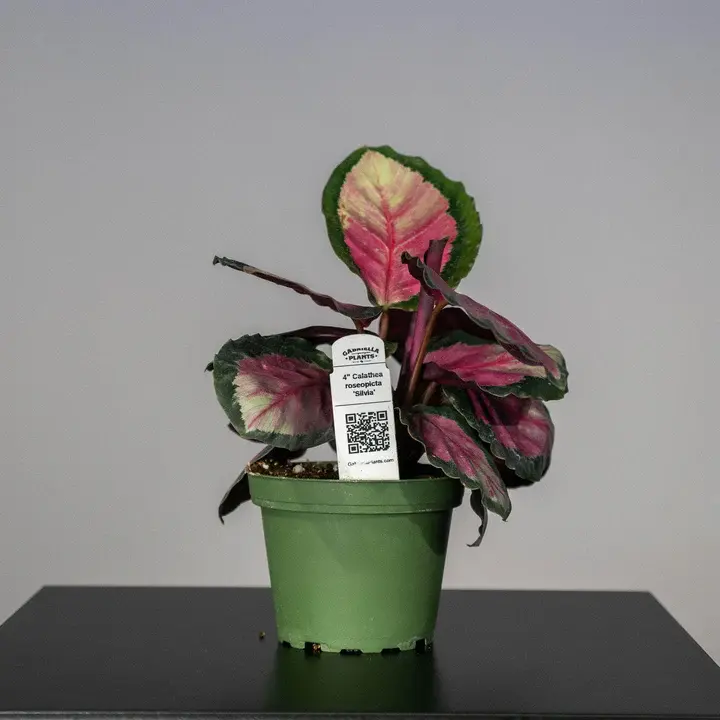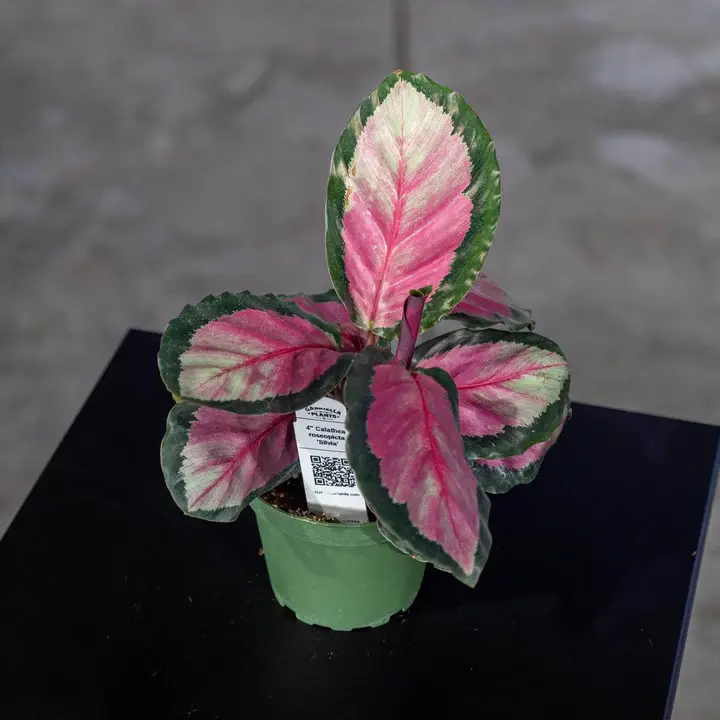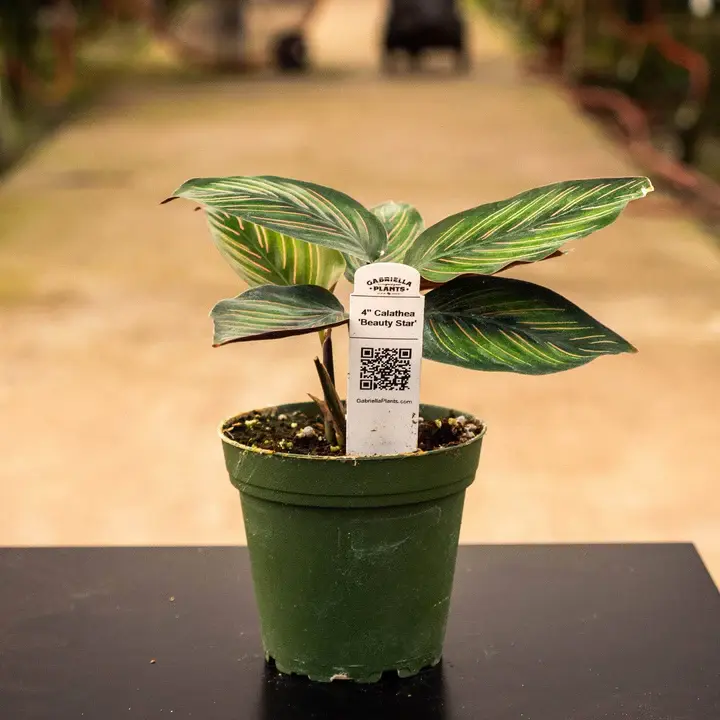
CALATHEA
Calatheas are commonly known as prayer plants and have recently been reclassified as part of the Geoppertia family. They are intriguing plants not only because of their wide range of foliage with a wide variety of colours and textures but also because they fold up their leaves at night and fold them outwards during the day. This is called Nyctinasty, and to this day, its purpose still remains a mystery to botanists.
Light
Calatheas thrive best in medium-bright to medium light.
In the wild, they live on the forest floor in the shade, with their delicate large leaves shading as much as possible and thus do not like to be exposed to direct light or two much bright indirect sunlight.
Water
Watering your Calathea can be a bit of a challenge as they like to stay on the moist side but not soggy. It may require some time to learn the cues as to when your plant requires watering.
Generally, if the top 2 centimetres of soil are dry, it is time to water your Calathea.
Calatheas do not want to be dried out completely and they will let you know when watering has been left too late by floppy over and droopy leaves. They will quickly recover once watered.
Soil
The soil should be loose and not densely packed to allow for free water drainage and oxygen supply to the roots. We recommend a cacti and succulent mix for your Calathea.
Adding coco coir which has
water retentive qualities to the cacti and succulent mix will ensure consistent moisture which Calathea prefer.
Temperature
Calatheas thrive best if kept in an environment of between 20°C - 28°C.
They are quite sensitive plants and do not like any cold drafts or dips in temperature which can lead to leaf drop or discoloration.
In winter keep them away from log burners or away from the path of the airflow from your heat pump.
Humidity
Humidity is a must for Calatheas and if the air is too dry, their leaves can get brown edges.
The ideal spot for a Calathea is a bathroom with medium light which naturally is more humid that the rest of our homes.
They can also be placed in a huddle with other plants which provides them with humidity or placed on a pebble try filled with water that as the water evaporates, provides the plant with humidity.

Fertiliser
Along with the rest of your houseplants, your Calathea
should be regularly fed with a
well balanced fertiliser.
During spring and summer this should be on a fortnightly basis while in winter when the plants are going into dormancy or are dormant once a month at half strength.
Propagation
Calatheas can only be propagated or multiplied by dividing a mother plant. All Calatheas grow in sections and each section can be separated from the mother plant through division as long as the section to be taken off, has got its own root system.
Some Calatheas also grow bulbs amongst the root system which can be cut off during repotting. The bulbs can then be propagated in soil in a stable warm and
humid environment like a propagation box.






























